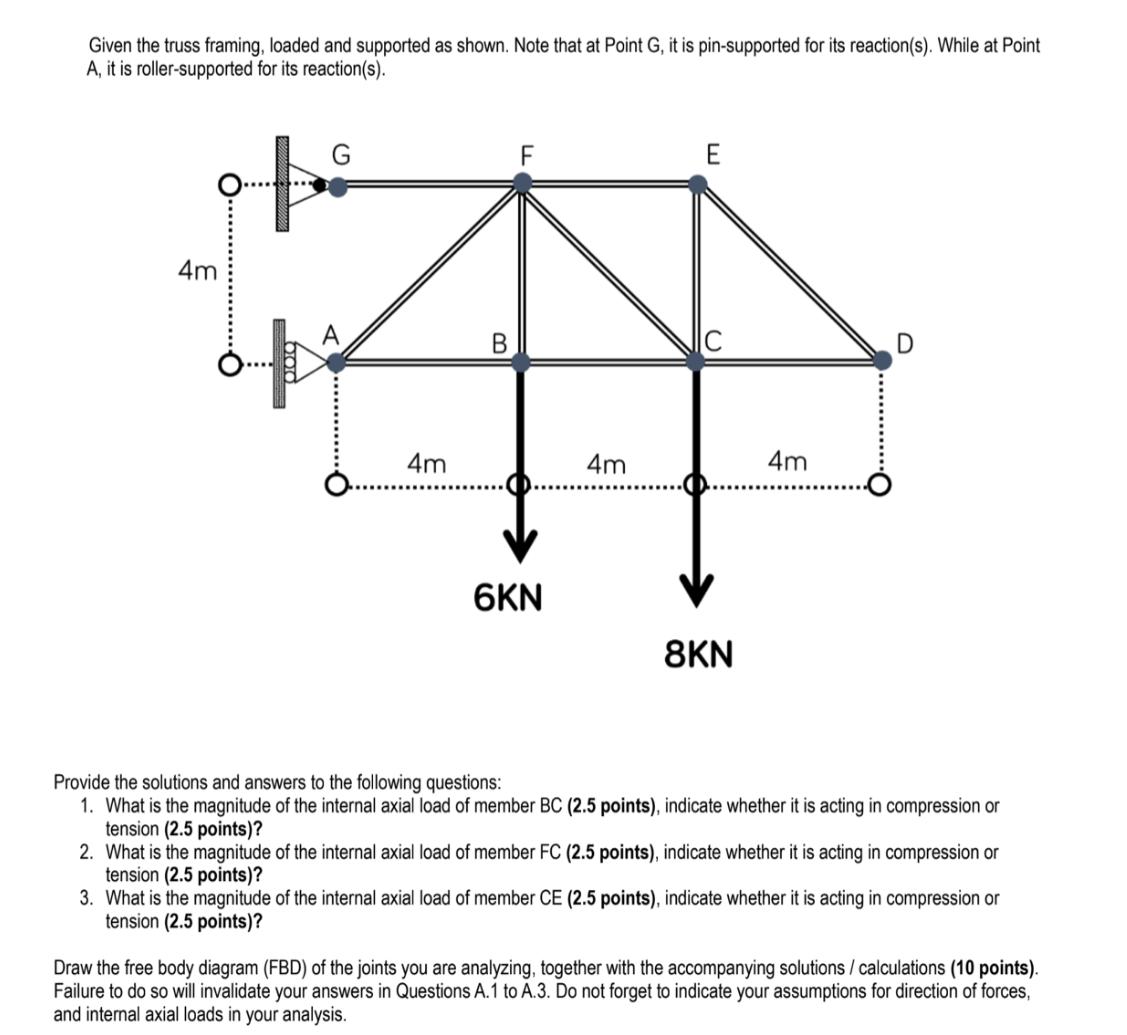Answered step by step
Verified Expert Solution
Question
1 Approved Answer
Given the truss framing, loaded and supported as shown. Note that at Point G, it is pin-supported for its reaction(s). While at Point A,


Given the truss framing, loaded and supported as shown. Note that at Point G, it is pin-supported for its reaction(s). While at Point A, it is roller-supported for its reaction(s). 4m 4m B F 6KN 4m E () 8KN 4m Provide the solutions and answers to the following questions: 1. What is the magnitude of the internal axial load of member BC (2.5 points), indicate whether it is acting in compression or tension (2.5 points)? 2. What is the magnitude of the internal axial load of member FC (2.5 points), indicate whether it is acting in compression or tension (2.5 points)? 3. What is the magnitude of the internal axial load of member CE (2.5 points), indicate whether it is acting in compression or tension (2.5 points)? Draw the free body diagram (FBD) of the joints you are analyzing, together with the accompanying solutions / calculations (10 points). Failure to do so will invalidate your answers in Questions A.1 to A.3. Do not forget to indicate your assumptions for direction of forces, and internal axial loads in your analysis. B. Another truss framing, loaded and supported as shown. Note that at Point A, it is pin-supported for its reaction(s). While at Point H, it is roller-supported for its reaction(s). A 1.60m 10KN B 20KN 1.60m 20KN D 10KN 1.60m 10KN F G 20KN 1.60m H 1.20m 1.20m Provide the solutions and answers to the following questions: 1. What is the magnitude of the internal axial load of member BE (2.5 points), indicate whether it is acting in compression or tension (2.5 points)? 2. What is the magnitude of the internal axial load of member BD (2.5 points), indicate whether it is acting in compression or tension (2.5 points)? 3. What is the magnitude of the internal axial load of member DE (2.5 points), indicate whether it is acting in compression or tension (2.5 points)? Draw the free body diagram (FBD) of the joints you are analyzing, together with the accompanying solutions / calculations (10 points). Failure to do so will invalidate your answers in Questions A.1 to A.3. Do not forget to indicate your assumptions for direction of forces, and internal axial loads in your analysis. Bonus | Booster Question(s): In general, how would can you reduce the amount of internal loads being carried by the webs and chords of trusses via architectural design? Illustrate your answer using truss in Problem B, provide a short explanation together with your illustration. (5.0 points)
Step by Step Solution
★★★★★
3.46 Rating (153 Votes )
There are 3 Steps involved in it
Step: 1

Get Instant Access to Expert-Tailored Solutions
See step-by-step solutions with expert insights and AI powered tools for academic success
Step: 2

Step: 3

Ace Your Homework with AI
Get the answers you need in no time with our AI-driven, step-by-step assistance
Get Started


